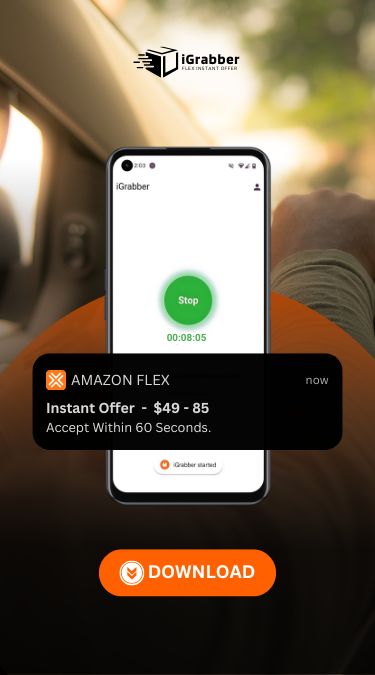Amazon’s Strategic Consolidation of Grocery and Pharmacy Brands
Amazon is launching a bold grocery integration strategy, uniting its brands like Whole Foods, Amazon Fresh, and PillPack to create a simpler, more seamless shopping experience. This strategic move aims to eliminate brand confusion, improve operational efficiency, and strengthen customer loyalty. By streamlining its grocery and pharmacy services, Amazon is redefining how consumers shop for everyday essentials—faster, smarter, and more conveniently.
Exploring Amazon’s Grocery Integration Strategy
Amazon’s portfolio includes a variety of grocery and pharmacy labels such as Whole Foods, Amazon Fresh, and PillPack. While each offers unique value propositions, this multiplicity poses a challenge in delivering a seamless customer experience. Consumers often struggle to differentiate between these services, leading to confusion and a fragmented brand perception.
In grocery alone, Amazon manages several storefronts, each targeting different market segments with distinct needs. Meanwhile, in pharmaceuticals, Amazon’s integration of services like PillPack into its broader ecosystem has yet to achieve full market capture. Addressing these complexities is central to Amazon’s current strategy, which is fundamentally about simplifying their retail operation.
Why Amazon Is Prioritizing Grocery Integration
Amazon’s decision to reorganize stems from the need for better cohesion and synergy across its brands. The goal is to create a unified platform that makes shopping intuitive and efficient for the consumer. Several factors are motivating this change:
- Enhanced Customer Experience: By merging its brands and streamlining operations, Amazon seeks to minimize customer confusion and improve navigation across its services.
- Operational Efficiency: Merging these different units can lead to more efficient use of resources and better inventory management.
- Increased Competitive Edge: With integrated services, Amazon can better compete with other retail giants like Walmart and Target, which already offer streamlined shopping experiences.
How Competitors Respond to Amazon Grocery Integration
Competitors are closely watching Amazon’s consolidation efforts. By integrating its diverse portfolio, Amazon is poised to set new standards in retail experience. The ripple effect on competitors could be substantial, forcing them to review and possibly adjust their own business models.
Through this strategic realignment, Amazon is not just aiming for immediate operational gains but also looking to lock in long-term market dominance. This move could pressure competitors to innovate and enhance their offerings just to keep pace.
Technology’s Role in the Merger
The integration of advanced technologies is pivotal to Amazon’s ambitious plan. Amazon’s strengths in AI and big data analytics are being leveraged to refine its inventory and marketing strategies.
The use of AI enables Amazon to predict consumer preferences more precisely, allowing for personalized recommendations that enhance the shopping journey. Moreover, data analytics provide insights that help streamline supply chain logistics, ensuring timely delivery of products, which is a cornerstone of Amazon’s reputation.
Amazon’s cloud capabilities also play a crucial role by providing scalable and efficient infrastructure. This technology backbone is essential for supporting the integrated platforms and services that will emerge post-restructuring.
Consumer Benefits
The restructuring promises numerous advantages for consumers. Here are some key benefits:
- Simplified Shopping Experience: A single point of service will make it easier for consumers to find and purchase what they need without having to navigate multiple platforms.
- Improved Customer Service: With a cohesive brand structure, customer queries and issues can be addressed more effectively, leading to higher satisfaction.
- Better Deals and Offers: A unified platform may allow Amazon to offer more competitive pricing and personalized discounts.
For more ways to improve your business processes with ease, visit our How It Works page.
Challenges of Streamlining
Despite its potential, the task of restructuring is fraught with challenges. Aligning different operational practices across diverse brands is complex. Here are some hurdles Amazon must overcome:
- Brand Identity Conflicts: Each of Amazon’s grocery and pharmacy brands has its established identity. Maintaining brand loyalty while integrating these entities could prove tricky.
- Logistical Coordination: Realigning logistical frameworks to support a unified structure requires significant restructuring of existing networks.
- Regulatory Concerns: The consolidation process must adhere to regulations across multiple jurisdictions, complicating the merger further.
What’s Next in Amazon’s Grocery Integration Journey
Amazon’s grocery integration strategy—uniting its grocery and pharmacy brands—is shaping up to be a transformative milestone in the retail sector. While challenges lie ahead, the Amazon grocery integration effort holds the potential to redefine consumer expectations and elevate the company’s competitive edge. Read the original article here.
As this strategy unfolds, it signals a new era in retail, characterized by streamlined services, intelligent automation, and a sharpened focus on customer satisfaction. Stakeholders across the industry are closely watching Amazon’s integration roadmap, hoping to extract actionable insights for their own operations.
To see how technology can streamline your business, visit our Pricing page.
By leading the charge on grocery integration, Amazon reinforces its commitment to innovation—delivering unmatched value, efficiency, and convenience to its global audience.





